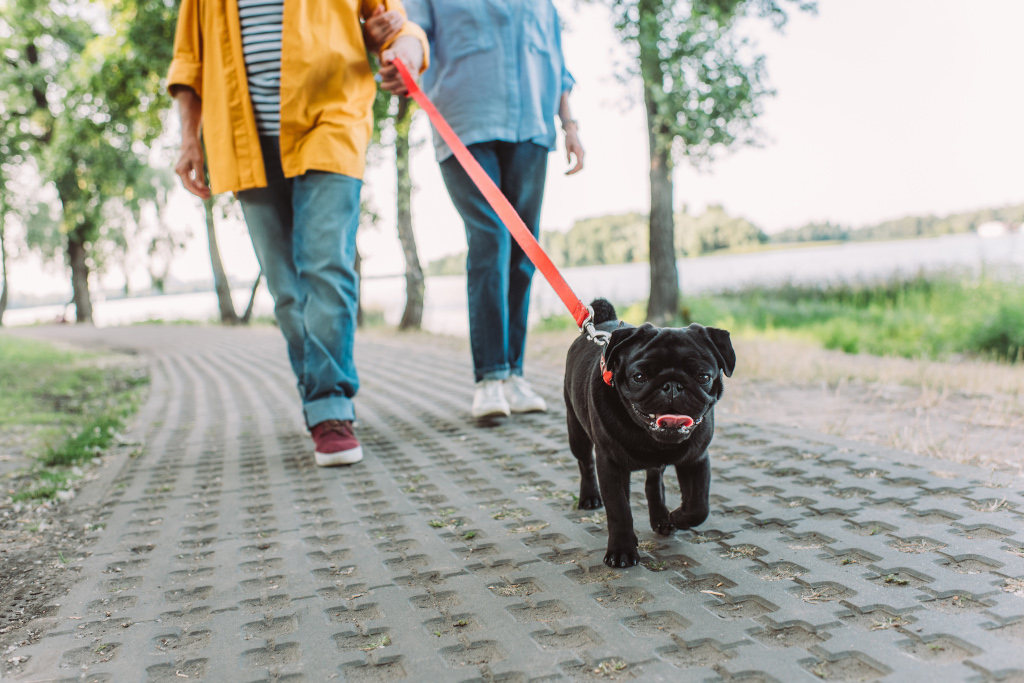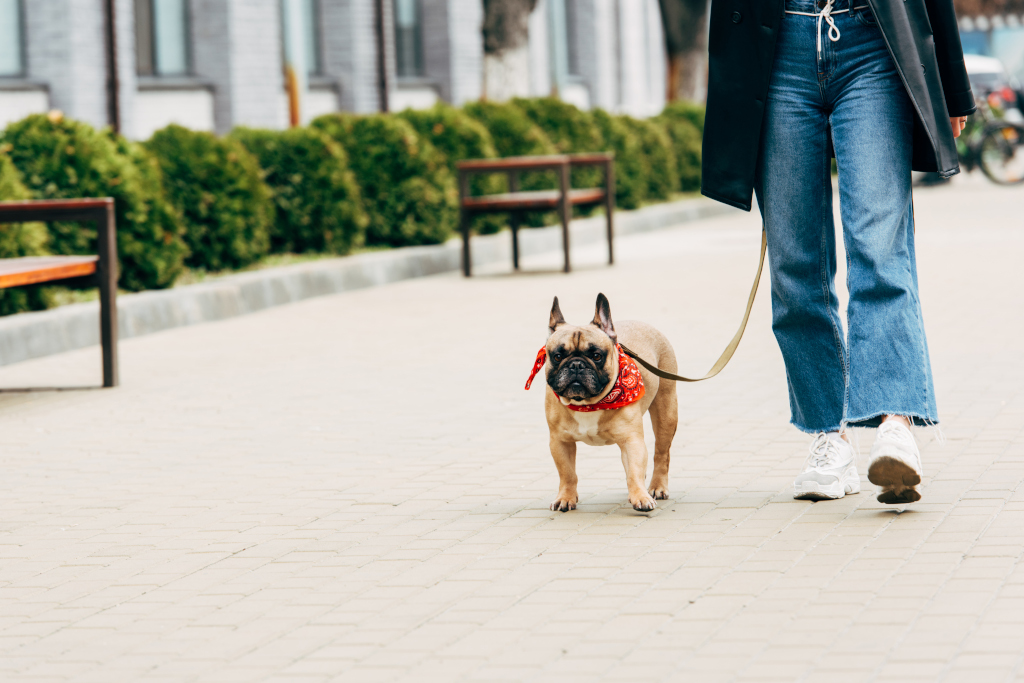
You know that walking your dog on a loose leash is important.
You’ve been working on it and using different techniques to teach your canine, but the results just aren’t quite there yet.
You wonder what else you can do or if you’re missing something.
Well, here are some tips to help you out! Before you know it, you will be walking your pup around the block on a perfect loose leash.
1. Start Indoors
As with any new skill you are trying to teach your pup, ensure to start indoors or in an area with minimal distractions and make sure they understand what you are expecting from them before taking them out into the big wide world. This will help your pup focus on the task at hand and make learning easier.
2. Go on Structured Walks
Unlike normal walks, structured walks involve you setting out with the intention of having your dog focus on you while walking alongside you and following you with slack on the leash. And apart from walking, nothing else is allowed!
That means no sniffing, no exploring, no pulling, no lunging, no barking, no greeting, etc. Even for yourself, you should refrain from engaging in conversation, looking at your phone, listening to music, or anything that could distract your pup. And well, to be fair, if you expect your dog to stay focused on you, then so should you.
If you feel your pooch may become distracted during structured walks, say, another dog is coming your way, turn 180 degrees, and walk in the opposite direction. The key is don’t allow your pup to be distracted in the first place. What that also means is you want to keep the leash length short. One foot is ideal so you can quickly apply leash pressure to keep your dog’s focus on you and have them follow you right by your side.
3. Change Directions & Paces
Avoid walking in the same direction at the same pace. This is because if your every movement is too predictable and your fido knows exactly where you will be heading, they’ll be more likely to zone out and easier to get distracted.
So what you’ll need to do instead is to switch directions and vary your speed often. For example, go slow, then fast, turn right and left, do quick turns or about-faces, and walk in a figure eight pattern, etc., even if that means zigzagging around the same block multiple times and going back and forth between the same points.
Being unpredictable keeps your pup guessing what’s next. And not knowing when you are about to change direction or start running or slowing down forces them to stay close by and pay full attention to you, as they have to constantly adjust their pace to keep up with you.
4. Gradually Increase Distractions
One of the common mistakes dog owners make is to take their dog out and start practicing in a highly distracting environment right away when their pup is not ready for it. You simply can’t expect your dog to listen and focus on you in a highly stimulating environment if they have just learned the basics.
So if you haven’t been able to find success with loose leash walking in the real world but have gotten good results indoors, perhaps take a step back. Practice in a less distracting environment like your backyard or a quiet street, and only expose your pup to more distractions when they can handle it.
The key to success is to take baby steps and increase distractions at a gradual pace until you can eventually reach your goal of having them focus on you, even in bustling areas.
5. Choose Appropriate Equipment

You’ve done everything correctly, yet still struggle to get your pup to walk calmly on a loose leash? The culprit could be the equipment you are using. If you’re using a back-clip harness, it will actually engage your dog’s opposition reflex and encourage them to pull.
Another type of harness called a dog joring harness also encourages pulling. These are made for sled dogs, so steer clear of them, especially if your canine is a puller or already reactive on a leash.
Instead, you’ll want to invest in front-clip harnesses, which can help redirect your dog’s focus towards you and prevent pulling, though my favorite tool for loose leash walking training remains a remote training collar and a prong collar.
I know. I know. These may not be everyone’s cup of tea, and you probably have heard a lot of negative talk about them, but they are simply not true. These tools are only designed to help you better communicate with your dog. If you are considering using a training collar, I recommend Dogtra 1900S, or if you prefer a prong collar, go for Herm Sprenger.
You May Also Like:
6. Carry Higher Value Treats
Treats are an essential part of any successful training session. But there are times when your canine is more interested in chasing a squirrel than taking that treat. In such cases, you’ll need to up your reward. So make sure you always have irresistible, high-value treats, like a tiny piece of chicken, liverwurst, cheese, hot dogs, etc., on you.
You May Also Like: Clicker Training for Dogs
7. Read Your Dog's Body Language
We always teach our dogs to understand our language, but what about trying to understand theirs too? Because our pup may be trying to tell us they’re uncomfortable, and it won’t help if we push them over their threshold.
So be observant.
You want to look for signs like panting, whining, lip licking, and staring. These are clear indicators that your pup needs a break.
8. Be Patient & Consistent
Training your dog to walk on a loose leash takes time, so don’t expect to see immediate results from the get-go. Set realistic expectations for yourself and your pooch, and understand that it could take several weeks, even months, of practice to master this skill.
Also, be consistent. Stick with the same set of rules. No pulling means no pulling, period. If you are too lenient and let your furry pal pull at times, they will become confused and never learn that pulling is unacceptable.

